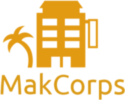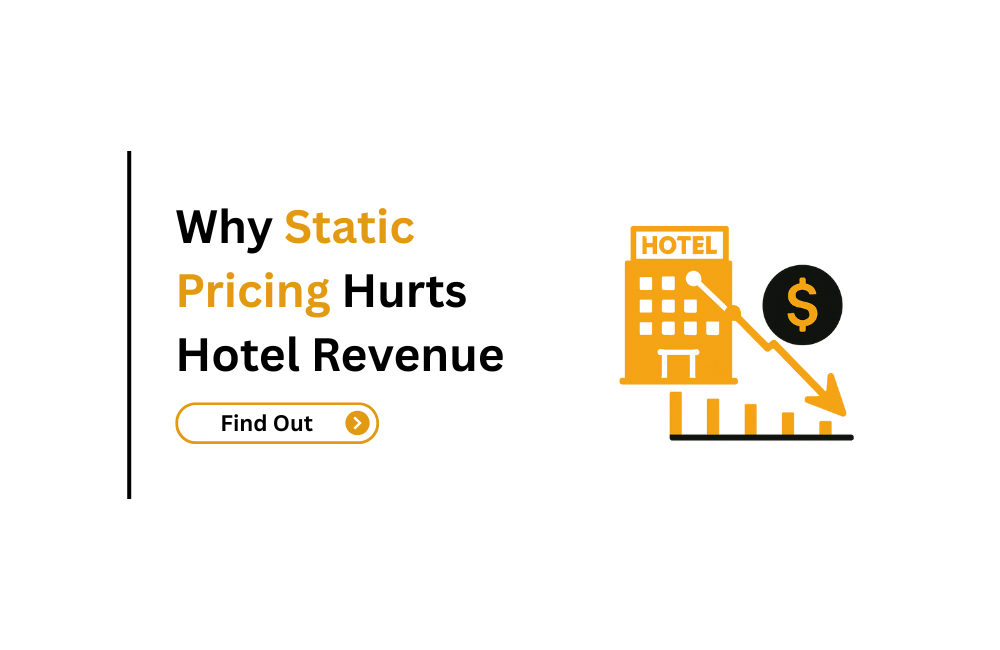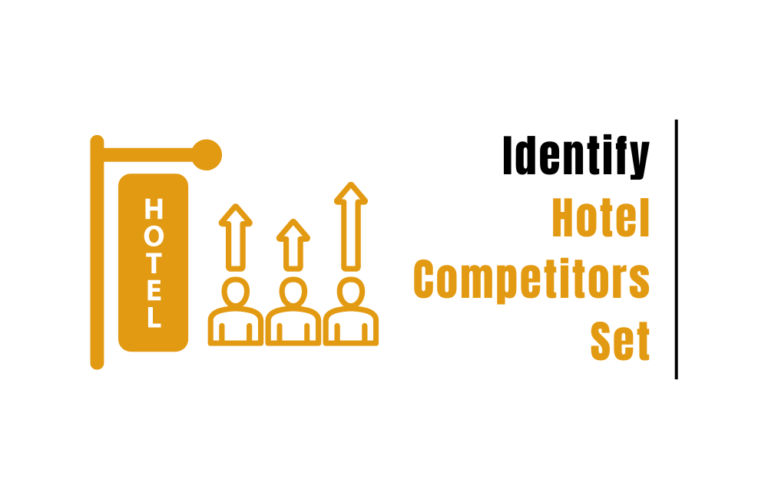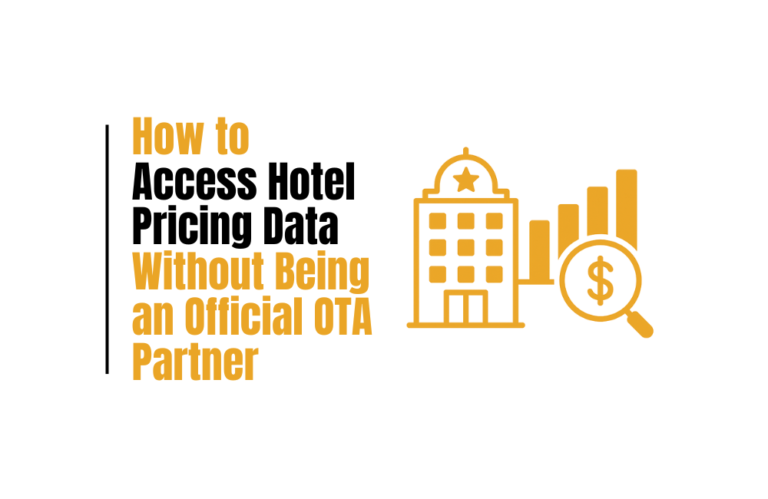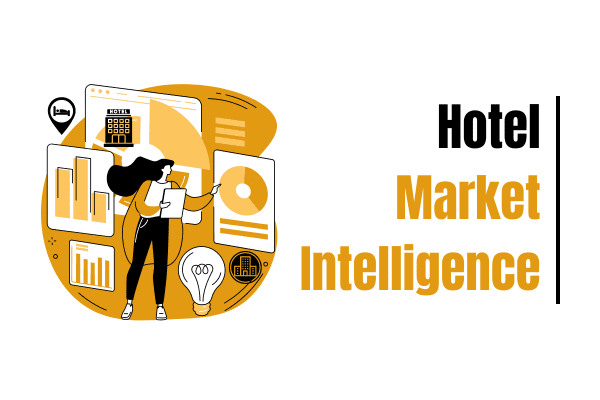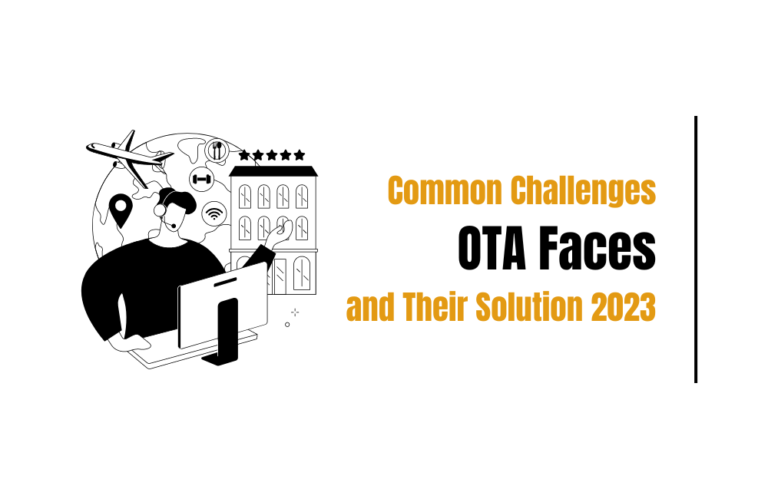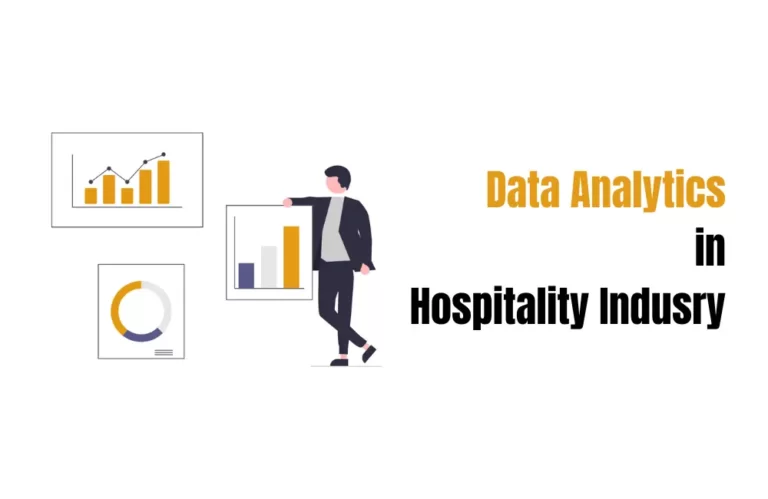Why Static Pricing Hurts Hotel Revenue
Static pricing might seem like the easy way out. Set it once, forget about it, and hope for the best. The price stays the same no matter what’s going on with demand, events, or market shifts.
Well, that simplicity comes at a cost.
In the fast-moving hotel industry, this strategy is losing its grip and for good reason. Fewer and fewer hotels rely on it now, and those who still do? Most are unknowingly leaving serious money on the table.
If you’re still using static pricing, this might be your wake-up call.
Read further to find out how it’s doing more harm than good and what you should be doing instead.
5 Common Drawbacks of a Static Pricing Strategy in Hotels
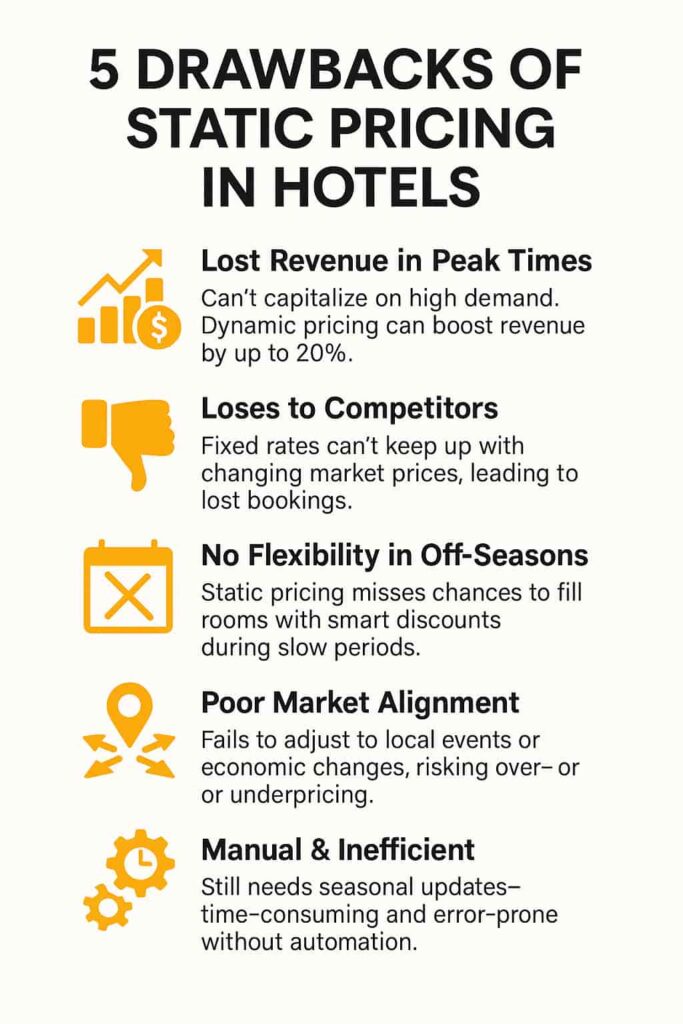
1. Missed Revenue During High-Demand Periods
Fixed pricing often limits a hotel’s ability to make the most of peak seasons or special events. When demand spikes, many guests are willing to pay more. However, with static pricing, this additional earning potential is lost. In comparison, dynamic pricing strategies have shown revenue increases of up to 20%, simply by adjusting rates in response to demand shifts.
2. Loss of Competitive Edge
Markets change quickly, and hotels using real-time pricing can easily outpace those sticking to fixed rates. Price-sensitive guests will naturally gravitate to better offers elsewhere. Without the ability to adapt to competitor pricing or sudden market shifts, hotels risk falling behind in both visibility and bookings.
3. Limited Flexibility in Low-Demand Periods
When occupancy drops, static pricing restricts the ability to offer more appealing rates. This often leads to vacant rooms that could have otherwise been filled with more agile pricing. Dynamic models allow hotels to respond to quieter periods by offering strategic discounts that maintain occupancy and protect long-term revenue.
4. Poor Response to Market Shifts
The hospitality industry is influenced by numerous variables, from local events to economic changes. Static pricing does not accommodate these shifts quickly. As a result, hotels may find themselves misaligned with the market and charging too much when demand is low or too little when demand rises unexpectedly.
5. Time-Consuming Manual Updates
Although static pricing seems easier to manage, it still requires periodic manual changes to account for seasons or special events. Without automation, this process becomes repetitive and prone to oversight, making it less efficient than many expect.
Static vs. Dynamic Pricing: A Clear Comparison
| Feature | Static Pricing | Dynamic Pricing |
| Flexibility | Rates remain fixed regardless of changes in demand or market conditions | Rates adjust in real time based on demand, events, seasonality, and competitor pricing |
| Revenue Potential | Limits revenue during high-demand periods and fails to optimise during low-demand periods | Optimises revenue by increasing rates during peak demand and offering competitive prices during dips |
| Ease of Use | Straightforward to set up and manage | Requires data-driven tools and ongoing analysis to manage effectively |
| Customer Perception | Predictable pricing can create a sense of trust | Sudden price shifts may confuse or frustrate customers if not communicated |
| Market Competitiveness | Risk of falling behind more agile competitors | Keeps pricing aligned with market shifts and competitor strategies |
How MakCorps Hotel Price API Helps You Stay Ahead with Smarter Pricing
Pricing in hospitality isn’t something you can afford to set and forget. With more travellers comparing rates online than ever before, being off by even a few dollars can cost you bookings or, worse, long-term profitability.
According to data from the U.S. Bureau of Labor Statistics (BLS) from 2001 to Q3 of 2024, the number of hotel properties grew by over 33%, rising from around 51,000 to more than 68,000. (source)
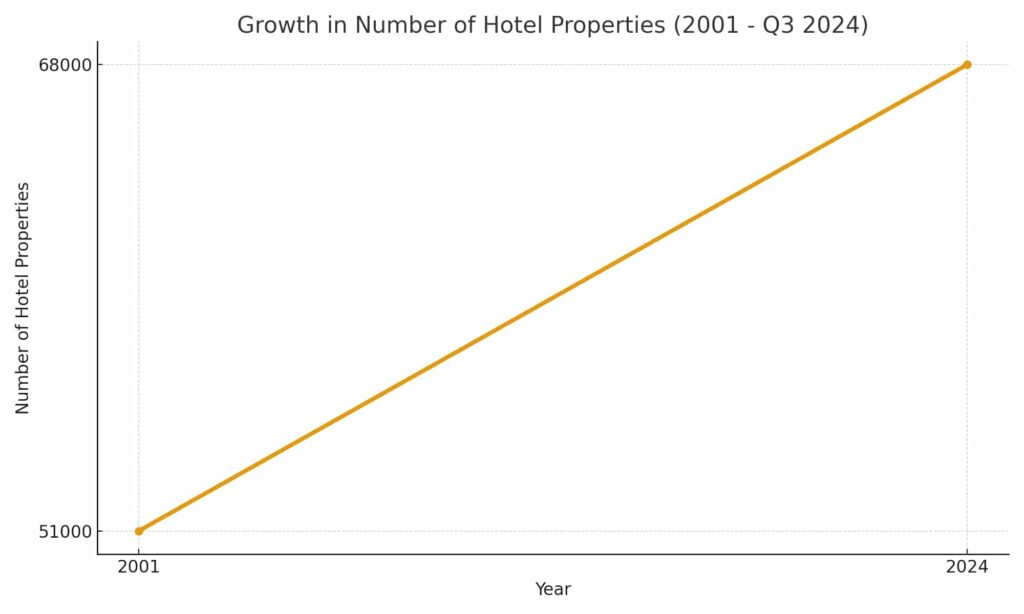
That figure doesn’t even include the surge in short-term rentals like Airbnb, which continue to flood the market. In this kind of environment, relying on guesswork or outdated pricing models can quickly set you back.
To make confident pricing decisions, you need reliable, up-to-date insights, not assumptions.
That’s exactly where MakCorps can help.

The MakCorps Hotel Price API gives you access to hotel rates from over 200 vendors across the globe. With that data, you can:
- Monitor your competitors’ pricing in real time
- Spot trends in demand across different seasons and locations
- Adjust your rates based on actual market behaviour, not gut feeling
- Catch pricing gaps before your competitors do
- Fine-tune your offers for higher conversion, better margins, or both
You can use the API to feed this data directly into your pricing system, or if you’re working without a developer, you can still access the same value using tools like Zapier, Make.com, or even Google Sheets.
Need some guidance on how to get started? These how-to articles walk you through exactly how to extract and use the data:
- Extract Hotel Prices from Multiple Vendors Using Google Sheets API
- Track Hotel Deals Under Budget Using Hotel Price API
- Track Cheapest Hotel Prices Across Vendors Using Google Sheets
To explore how the API works and see what’s possible, check out the documentation.
Or watch this video below:
Wrapping Up:
In this blog, we broke down how fixed pricing limits your ability to grow revenue, stay competitive, and respond to real-time market shifts. The reality is simple: travellers compare rates constantly, and your pricing needs to keep up.
The good news? You don’t have to overhaul everything to get started.
With tools like the MakCorps Hotel Price API, you can access real-time competitor pricing and implement a competitive or dynamic pricing strategy, and you’re well on your way to boosting bookings and profits without the guesswork.
Now’s the time to shift from static to strategic.

Neha Jangid writes for Makcorps, bringing over three years of hands-on experience in the hotel and travel data space. She digs deep into hotel APIs, flight info, and travel tech, turning complex details into easy-to-understand content that actually helps businesses and readers. Neha works closely with hospitality sites and industry experts to stay sharp and share practical insights. Her goal is simple: make travel data useful, not confusing.
